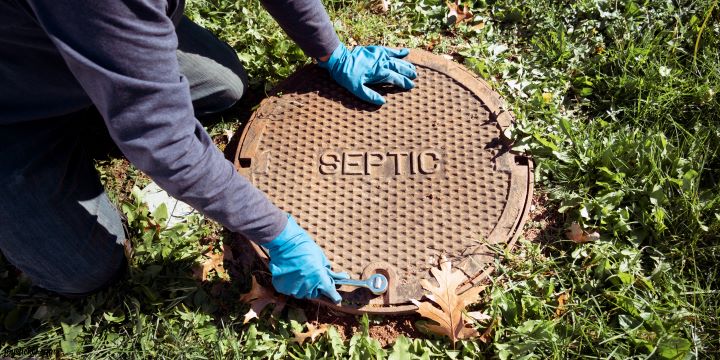
Eco-Friendly Septic Systems: Benefits of Nitrogen-Reducing Designs
Table of Contents
- Introduction to Eco-Friendly Septic Systems
- How Nitrogen-Reducing Septic Systems Work
- Environmental Impact of Nitrogen-Reducing Systems
- Health Benefits of Reduced Nitrogen Levels
- Costs and Savings of Installing a Nitrogen-Reducing System
- Final Thoughts
Septic systems are pivotal in managing household waste, especially in rural areas with unavailable centralized sewage systems. With the increasing focus on environmental sustainability, the spotlight is now on innovative solutions like a nitrogen-reducing septic system. These systems manage waste efficiently and reduce harmful nitrogen emissions, making them a popular choice among environmentally conscious homeowners. Eco-friendly septic systems are designed to minimize adverse environmental impacts by incorporating advanced treatment processes. By opting for these green solutions, homeowners contribute to a cleaner and healthier ecosystem while effectively managing household waste. The movement towards sustainable waste management is not a passing trend but a vital shift in how we interact with our surroundings. These systems align perfectly with broader environmental goals and community health priorities.
How Nitrogen-Reducing Septic Systems Work
Nitrogen-reducing septic systems are engineered to break down and treat wastewater in several stages. The primary objective is to lower the nitrogen levels in the effluent before it reaches the soil and groundwater. Here’s a brief overview of how they function:
- Initial Treatment: Wastewater from the household enters the septic tank, where solid wastes settle at the bottom, forming sludge, while oils and grease form a scum layer on top. This stage involves the fundamental separation of solids and liquids, essential for the subsequent treatment processes.
- Secondary Treatment: The liquid, or effluent, flows into a secondary treatment stage, where microorganisms break down organic matter and reduce chemical contaminants. This biological process is crucial for degrading harmful substances and preparing the effluent for nitrogen reduction.
- Nitrogen Reduction: Specialized bacteria in this stage convert harmful ammonia and nitrates into harmless nitrogen gas through nitrification and denitrification. These biochemical reactions are vital for transforming nitrogen compounds into non-toxic forms that won’t harm the environment.
- Final Dispersion: Treated effluent is dispersed into a drain or leach field, undergoing further natural filtration before mixing with groundwater. This final step ensures that any remaining impurities are filtered out, providing another layer of environmental protection.
Environmental Impact of Nitrogen-Reducing Systems
Nitrogen pollution has far-reaching effects on aquatic ecosystems. Excessive nitrogen in water bodies contributes to eutrophication, which leads to oxygen depletion and negatively impacts marine life. Reducing nitrogen runoff is crucial for maintaining the health of water ecosystems. Commercial septic system engineering can significantly aid in reducing nitrogen pollution. Nitrogen-reducing septic systems, a key component of advanced septic system engineering, play a vital role in mitigating this form of pollution. By lowering the nitrogen output, these systems help prevent eutrophication, ensuring healthier water bodies and promoting biodiversity. This proactive approach benefits aquatic life and enhances recreational opportunities and water quality for human use. Lower nitrogen levels in waterways lead to fewer algal blooms, which fosters a more balanced and vibrant ecosystem. By incorporating advanced commercial septic system engineering practices, we can effectively reduce nitrogen runoff and its detrimental effects on aquatic ecosystems.
Health Benefits of Reduced Nitrogen Levels
High amounts of nitrogen in drinking water are dangerous since they can cause several health problems. High nitrate levels are dangerous for babies because they can lead to methemoglobinemia, sometimes called “blue baby syndrome.” Septic systems that reduce nitrogen protect public health by better processing wastewater and lowering dangerous nitrogen levels. Decreased amounts of nitrogen in drinking water also lessen the chance of gastrointestinal ailments and other possible health issues. The advantages create a safer and healthier atmosphere that benefits entire communities rather than individual homes. By taking this collective safety precaution, parents may rest easy knowing that their children’s water is free of dangerous pollutants, improving public health.
Costs and Savings of Installing a Nitrogen-Reducing System
While the initial investment in a nitrogen-reducing septic system may be higher than traditional systems, the long-term benefits and savings are compelling. Here are some financial aspects to consider:
- Installation Costs: Purchasing and installing a nitrogen-reducing system is typically higher due to the advanced technology and materials. However, financial incentives and subsidies from environmental programs can help offset these upfront costs.
- Operational Savings: Reduced maintenance and the system’s longevity can lower overall operational costs. High-quality materials and advanced engineering often mean fewer repairs and longer intervals between servicing.
- Health and Environmental Savings: By preventing contamination of drinking water and ecosystems, these systems help avoid costs related to healthcare and environmental restoration. The expense of mitigating pollution and health risks is significantly reduced, translating to broader community savings.
Final Thoughts
Investing in nitrogen-reducing septic systems greatly advances sustainable waste management techniques. These systems are a wise decision for towns and homes because they are advantageous for the environment and health and can offer possible long-term savings. Adopting environmentally responsible solutions now clears the path for a healthier and cleaner future. Because these systems safeguard water supplies and lessen nitrogen pollution, they are essential to maintaining our natural environment. Nitrogen-reducing septic systems will become a typical component in residential and commercial constructions as more communities start to understand the importance of sustainability. By making this investment, you can be confident that environmental laws will be followed and that you are dedicated to a sustainable future.



